Newborn HAL® S3010 A
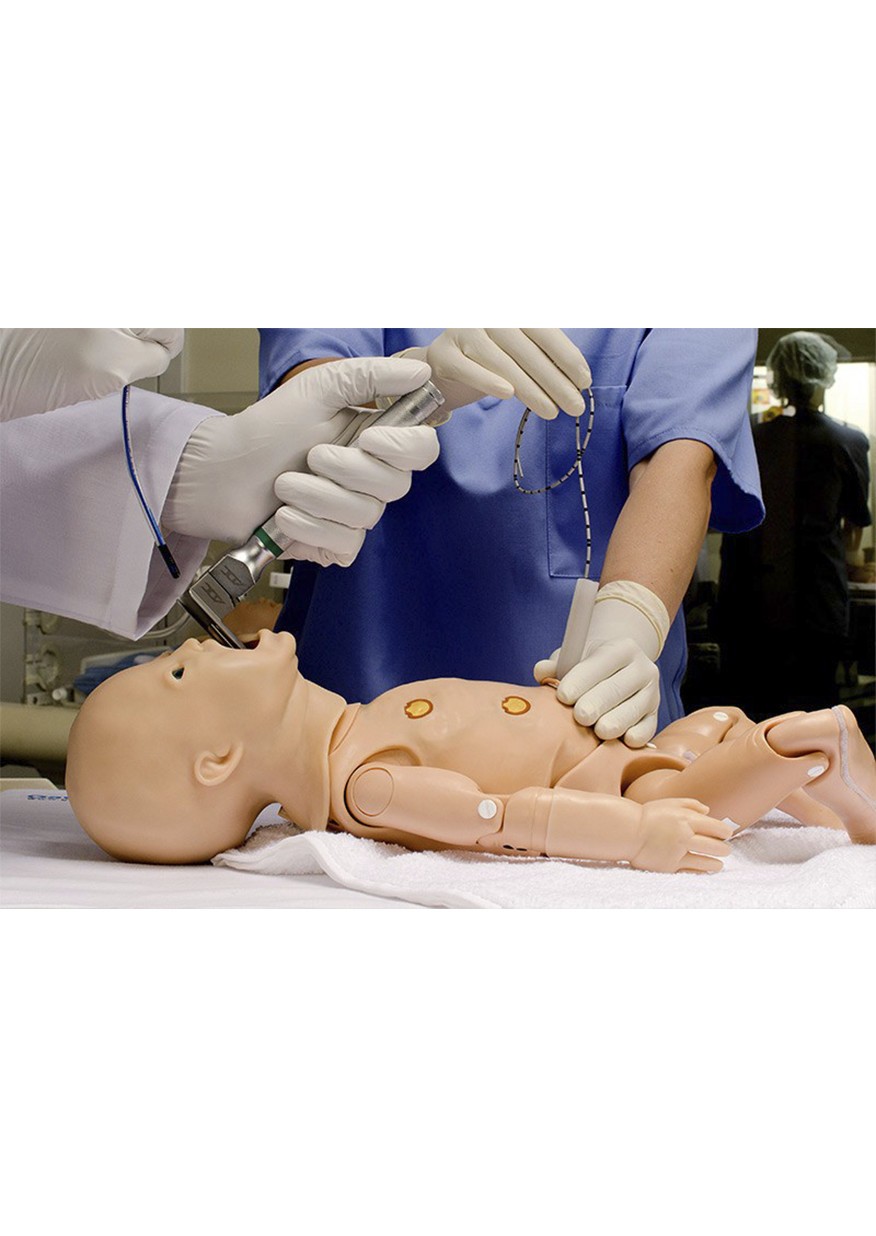
Newborn HAL® S3010 A Neonate at 40 weeks Gestational Age
Details:
Newborn HAL® allows you to take advanced simulation where you need to go and that can be at an accident scene, in an ER, in a Labor and Delivery room, or in a NICU. “Care in motion” also provides the opportunity for you to measure how well patient “hand-offs” take place. What is done well and what needs to be improved?
40 week tetherless newborn with breathing, pulses, color and vital signs that are responsive to hypoxic events and interventions. Also includes trending, crying, convulsions, oral and nasal intubation, airway sounds and extra tablet PC for control.
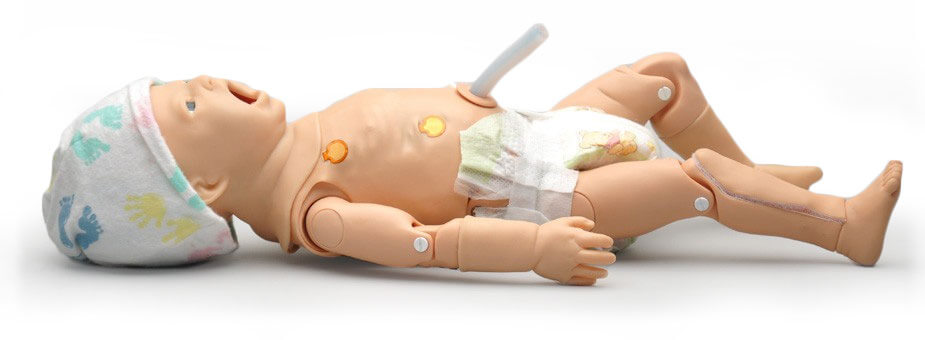
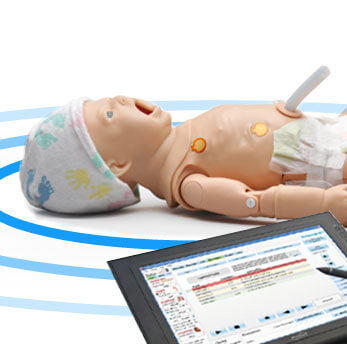 |
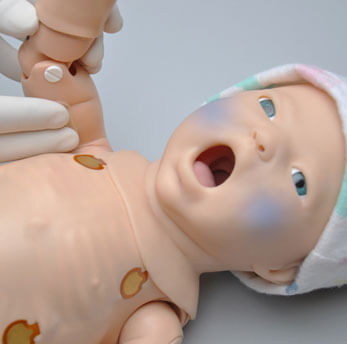 |
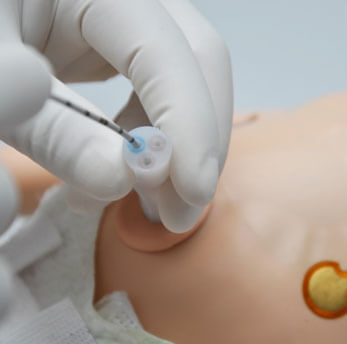 |
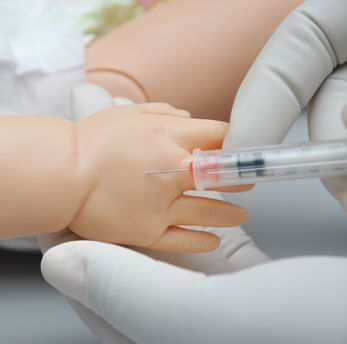 |
|
Tetherless
Control Newborn at distances up to 300 feet while he smoothly transitions between physiologic states in response to commands from a wireless tablet PC.
|
Cyanosis
Color and vital signs respond to hypoxic events and interventions.
|
Realistic Umbilicus
HAL’s umbilicus can be catheterized and even has a pulse synchronized with programmed heart rate.
|
Bilateral IV arm
Newborn HAL® has bilateral IV training arms that can be used for bolus or intravenous infusions as well as for draining fluids.
|
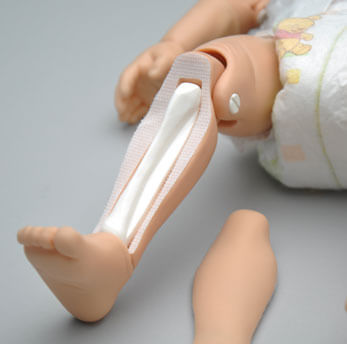 |
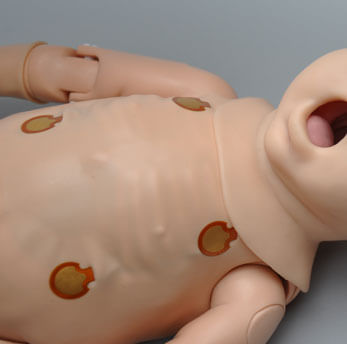 |
||
|
Intraosseous Access
Intraosseous infusion and injection system with realistic tibia bones.
|
ECG monitoring
Newborn has conductive skin regions that allow the application of real electrodes to view ECGs with physiologic variations, allowing the user to track cardiac rhythms with their own equipment just like with a human patient.
|
HAL® Neonato S3010 Demonstración en Español
General
- Available in ethnic skin tones
- Tetherless and fully responsive even while being transported
- Powered from an internal rechargeable battery or wall outlet
- Battery capable of 300 recharges and operate the simulator up to 4 hours
- Simulator receives commands from a wireless tablet PC and operate at distances up to 300 feet
- Option to operate automatically using Automatic mode or by the Instructor
- Training Guide with both basic and advanced interactive scenarios
- Use pre programmed scenarios, modify them or create your own quickly and easily
- Installation and training worldwide
- Simulation Made Easy™
Airway
- Multiple upper airway sounds synchronized with breathing
- Nasal or oral intubation
- Right mainstem intubation
- Sensors detect depth of intubation
- Airway may be obstructed
- Block right lung, left lung, or both lungs
- Head tilt/ chin lift
- Jaw thrust
- Simulated suctioning techniques can be practiced
- Bag-Valve-Mask Ventilation
- Placement of conventional airway adjuncts
- Endotracheal intubation using conventional ETTs
- Sellick maneuver brings vocal cords into view
Circulation
- Measure blood pressure by palpation or auscultation
- Use real modified BP cuff to measure blood pressure
- Korotkoff sounds audible between systolic and diastolic pressures
- Pulse sites synchronized with BP and heart rate
- Bilateral IV arms with fill/drain sites
- Realistic flashback
- SubQ and IM injection sites
- Intraosseous access at tibia
- Chest compressions are measured and logged
- ECG monitoring using real devices; apply real electrodes to conductive skin regions
- Multiple heart sounds, rates and intensities
- ECG rhythms are generated in real time
- Heart sounds synchronized with ECG
- Dynamic rather than static 12 lead ECG display with optional Automatic Mode and Vital Signs Monitor
- Fontanelle, umbilical and bilateral brachial pulses synchronized with ECG
Breathing
- Control rate and depth of respiration and observe chest rise
- Automatic chest rise is synchronized with respiratory patterns
- Select independent left and right upper lung sounds
- Chest rise and lung sounds are synchronized with selectable breathing patterns
- Accommodates assisted ventilation including BVM and mechanical support
- Ventilations are measured and logged
- Chest compressions generate palpable blood pressure wave form and ECG artifacts
- Detection and logging of ventilations and compressions
- Simulated spontaneous breathing
- Variable respiratory rates and inspiratory/expiratory ratios
- Bilateral chest rise and fall
- Unilateral chest rise simulates pneumothoraces
- Normal and abnormal breath sounds
Cardiac
- ECGs are generated in real time with physiologic variations never repeating textbook patterns
- Heart sounds may be auscultated and are synchronized with ECG
Speech
- Pre recorded crying
Articulation and Movement
- Seizure/convulsions
- Muscle tone active, right arm only, left arm only, reduced and limp
- Realistic rotation of the shoulder and hip joints
- Legs bend at the knees
- Supine or semi-recumbent positions
Other
- Central cyanosis
- Color and vital signs respond to hypoxic events and interventions
- Fill bladder and perform Foley catheterization
- Interchangeable genitalia
- Umbilical catheterization
- Umbilicus with two arteries and one vein. Even practice cutdowns
- Temperature probe placement
- Insert feeding tubes
- Auscultate bowel sounds
- Remains fully functional even while in transit User Interface
- Sensors track student actions
- Changes in condition and care provided are time stamped and logged
- View the actions of up to 6 care providers using a responsive menu or write narrative
- Generate and share diagnostic lab results
- File sharing through Vital Signs Monitor
- Links with optional recording and debriefing system integrating the event log with cameras and patient monitor
- Supplied with wireless tablet PC
- Optional automatic mode
- 20 pre programmed scenarios which can be modified by the instructor even during the scenario
- Create your own scenarios - add/edit
- Change simulator’s condition during the scenario
